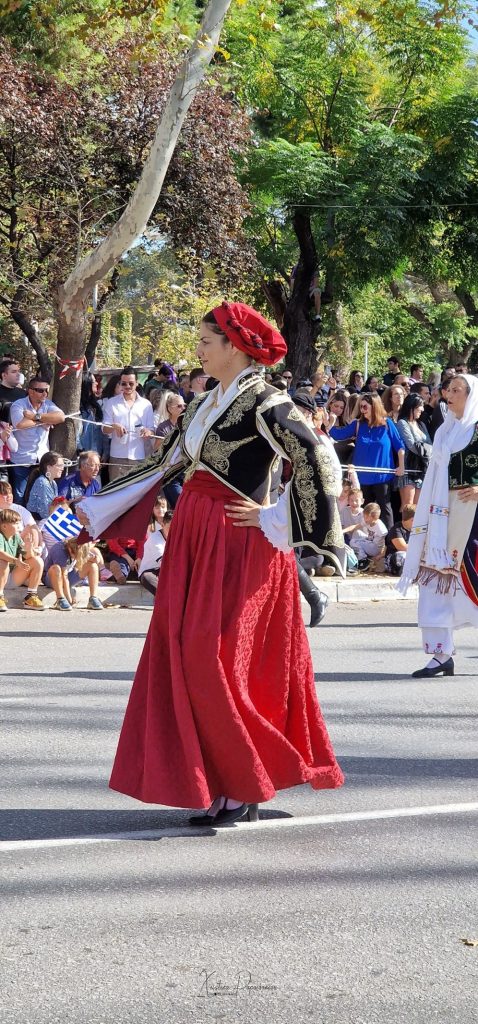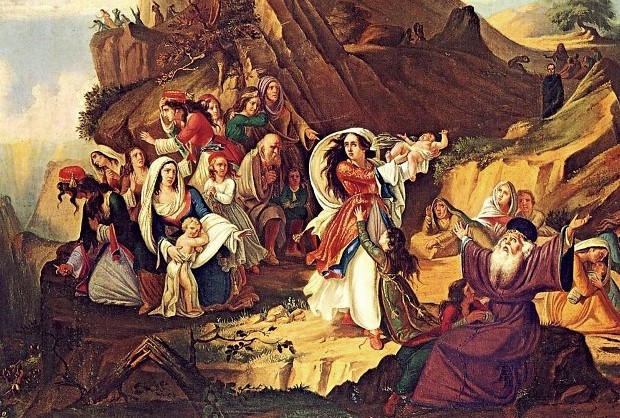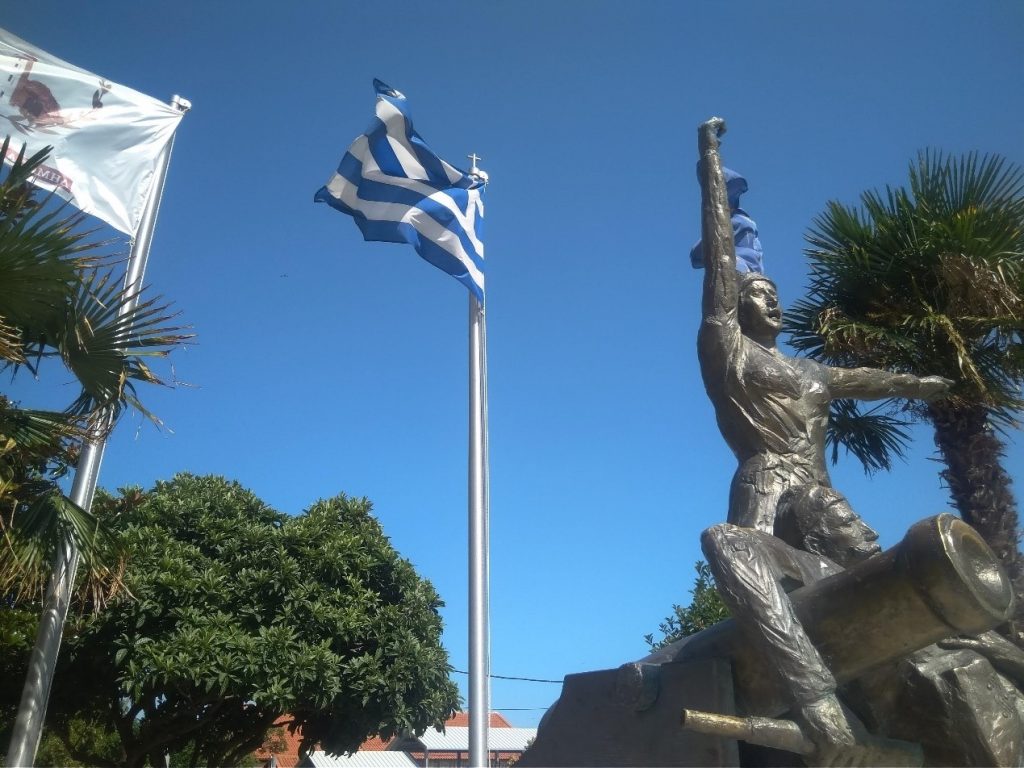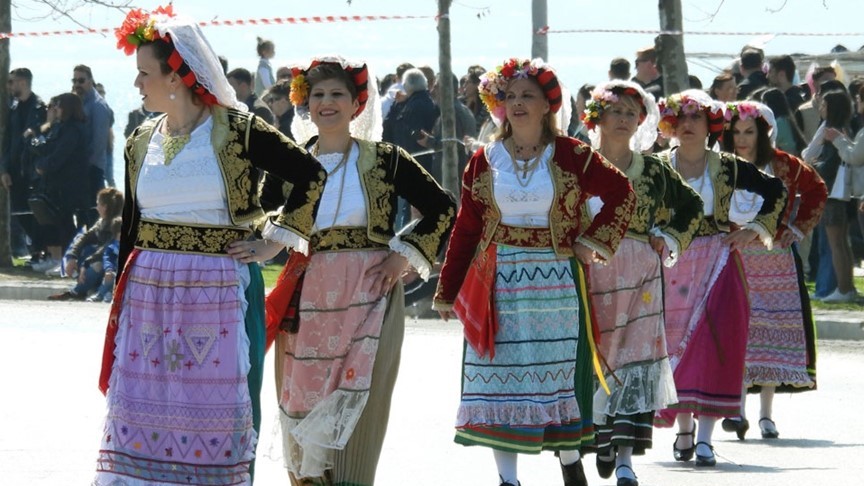By Marina Siskos
Women and men are celebrated and honoured in the anniversary of March 25th, the date that marks the onset of the Greek Revolution against the Ottomans. People who are heroes and stood out for their extraordinary courage to commit to the noblest of causes, the liberation of their country, and the continuation of the Greek civilisation. All of them offered their life, their possessions, even their children, to the highest duty of their era and thus, achieved eternity.
The selection of the day, March 25th, has not been random, as our ancestors decided upon the hallmark celebration of the Annunciation of the Theotokos (Virgin Mary) to start this long and trying battle that brought liberation to Greece so that the Virgin Mary would guide them through the long and trying war against the Turks.
Eventually, in the spring of 1821, after nearly 400 years of Turkish rule, the Greeks of Morea (Peloponessus), rose in rebellion. This uprising, following another, ill-prepared Greek revolution in Moldavia that was quelled by the Ottoman army, was to succeed in the Peloponnese from March 1821 onwards. Peloponessus was a rugged area, suited to hit-and-run warfare, with an overwhelming Christian majority, and Greek dominance in the sea due to the many ships of the nearby islands of Hydra and Spetses.
Many women, supporters of the supranational Philhellenic movement, are known to have been actively involved in the preparatory gatherings in the Filiki Eteria (Friendly Society). Women constituted a large and indispensable body of warriors who fought with all their might for the country and freedom. They are known for their generosity, their strength, their resilience, and invincible spirit in the face of the greatest threats. They dared to dream, fight, sacrifice and they shaped history. Interesting is the fact that the many women of the Revolution had often completely different characters.

For instance, Manto Mavrogenous (1796-1840), was a young, noble, and delicate figure. On the contrary, Laskarina Bouboulina (1771-1825), was a middle-aged woman, with a masculine behaviour and harsh characteristics. A common point was their shared faith in the enlightened vision that Greece will be free.
At the same time, the enslaved Greek women were experiencing a harsh reality. They and their children were exposed to all kinds of violence and misery; often they were traded in Turkish slave markets, or they had to fatally resist. Let us remember the heroic women of Zalongo, who committed suicide, jumping off a cliff, to avoid slavery.
The women of Zalongo
The Dance of Zalongo is the ultimate act of defiance and bravery. In 1803, the Epirus ruler, Ali Pasha, was intent on finishing once and for all with the rebellious people of Souli, who were consistently creating problems for him and the Pasha.
On December 12, the Turkish army forced them to sign a treaty, by which they promised to withdraw from their land. On December 16, the people of Souli divided into three phalanxes and left their ancestral land behind. On December 18, the third and last phalanx heading south, was attacked in Zalongo by a large body of Turkish-Albanian soldiers.
A violent fight followed and a group of soldiers was trapped by the enemy. Among the entrapped were about 60 women, some of which were pregnant. On the one side, there were hundreds of armed troops and the Souliotes’ certain enslavement, whereas, on the other side, there was the steep cliff of Zalongos. To evade capture, enslavement and humiliation, the women threw their children off the steep cliff and then they held hands and started singing and dancing, with their steps leading to the cliff, where they jumped to their death, one-by-one.

Suleiman Aga, Ali Pasha’s officer, was an eyewitness of the massive suicide and offered a concrete testimony of the Dance of Zalongo: “women held hands and started a dance, which was driven by an unusual heroism, with the fear of death emphasising its rhythm. At the end, the women make a permeating and long cry with its echoes extinguished in the depths of a terrifying cliff where they all fall together with their children.”
The person who offered a record of the event between 1803 and 1804, is the Prussian diplomat and traveller, Jacob Bardoldi (1779-1825). Another testimony of the dance of Zalongo is provided by the fighter of the Greek War of Independence and memoirist, Christopher Perrevos (1773-1863). The incident was soon known across Europe and the Dance of Zalongos became a symbol of heroism and self-sacrifice over the years. The brave, almost festive march to death by the Souliot women inspired artists to interpret the courageous act, including the French artist Ary Scheffer, who created the romantic painting “Les Femmes Souliotes.”
Domna Visvizi
The renowned Captain from Ainos, was born in 1783. In 1808, she was married to Hanji-Antonis Visvizis, and they had five children. Domna Visvizi narrates her own life in her memoirs: “Ainos is a blessed country! My love for the sea has been so intense, so irresistible, I was inexplicably drawn to the sea like no other element or person. I had absolutely no control over the sea’s allure to me. Also, I was raised in a loving home. Every home in my homeland was troubled by two major concerns: the marriage of the daughters and the liberation of the country.”
In 1821, Captain Hanji-Antonis Visvizis equipped his warship named “Kalomoira” with cannons and sailors and embarked on the War of Independence, accompanied by his wife, Domna, who was pregnant at the time, and their four children, the icon of Virgin Mary, the sacred bones of their ancestors and a handful of soil taken out of the land of Ainos, which they left behind. Domna was a steadfast supporter of her husband, taking on an active role in all the naval battles: that of Samos, Lesvos, and Evripous, until Hanji-Antonis was murdered on his own ship. Following the “mysterious death” of her husband, Domna, supported by the second-in-command captain Stavris, actively continued to fight with her late husband’s ship and her now five children.
During the siege of Evvoia, her warship and her overall contribution was crucial to the battle’s outcome; Domna was transferring ammunition and troops and, oftentimes, she was partaking in naval battles, bombarding the Turkish positions, and facilitating the battle for her co-patriots. In Evvoia she tore apart the transition of the troops of Omer Pascha, preventing them from reaching Central Greece. She was providing with ammunition and food supplies the revolted people of Skiathos island and other Aegean islands, thus enabling the continuation of the Greek War of Independence. Her warship “Kalomoira” was seriously damaged by the encounters she was involved in. In 1823, after the continuous and fierce naval battles, Domna was incapable of sustaining her warship and gave it over to the Greek administration so that it could continue participating in the War of Independence, as a fireship.

Captain Domna Visvizi was honoured as a heroine of the Greek Revolution of 1821, as she fought incessantly, relentlessly for three whole years, defying all dangers and threats and she dedicated every penny of her fortune to the liberation of Greece.
Her self-sacrifice, valor, generosity, and courage were known throughout the country and the European philhellenes.
Following the liberation of Greece, the captain Domna Visvizi settled down with her children, originally in Nafplion and later in Hermoupolis, Syros. She was forced to live in extreme poverty and under the threat of eviction. Allegedly, the house she was renting in Nafplion had no windows or doors and later, in Syros, the island in which she had so many times defeated the enemy, she was barely making ends meet often lacking the necessary equipment for her subsistence. She died in Piraeus, so far away from her cherished land of Ainos.
Elizabeth Ypsilantis (1768-1866)
The preparation and outcome of a nation’s revolution is not solely a matter of determination and bravery. It largely relies upon the resources and financial stability. The independence of a nation is a massive expenditure. Originally, the Filiki Eteria took on the responsibility to cover the expenses and funded the Revolution. Also, many wealthy Greeks of the diaspora eagerly contributed with large amounts to this end, such as Georgios Leventis and Panayiotis Sekeris. Yet, any funds that had been raised were soon exhausted, and people turned to the Prince of the Danubian Principalities, Alexander Ypsilantis, who willingly liquidated his fortune and donated five million grosz. His mother, Elizabeth Ypsilantis, was given the nickname “The great mother of the Filikoi” thanks to her generous help for the war preparation, having donated the entirety of her fortune and everything that she could preserve from the Sultan’s sequestration. From real estate and jewelry, Elizabeth Ypsilantis offered everything to the revolted Greeks and the noble cause of their liberation.

Elizabeth Ypsilantis was a bright woman, of aristocratic line and played a significant role in the Greek Revolution. All four of her sons participated in the Greek War of Independence: Dimitrios, Nickolas, Alexander, and Gregory. Also, during the Revolution, her salon was transformed into headquarters, where the developments and strategic decisions of Filiki Eteria took place. The final decision for the start of the Greek Revolution was taken in her salon and the proclamation “battle for faith and homeland” was drafted here. Before Alexandros Ypsilantis signed it, he asked his mother to dispose of all the family real estate for the support of the Greek Struggle. As she accepted, he kissed her hand.
Conclusion
Unfortunately, the case of Domna Visvizi wasn’t a random exception. When the first Greek state was established, the administration didn’t prioritise the rewarding of the indispensable warriors, who were effectively the most crucial liberating force. Despite the large amounts of money allocated for the warriors of the land of the sea, the natives and the non-natives, in reality, when the time came to compensate them, they were largely ignored: Manto Mavrogenous, Marigo Zarafopoula, Karpos Papadopoulos, Panayiotis Sekeris, were also among the glorious warriors who, after enabling the liberation of the country, were sidelined by the administration of the newly-established state.
Contemporary women commemorate their ancestors through material and immaterial culture. Homage to our ancestors’ is paid in parades, events and re-enactments inspired by the beauty of the Hellenic iconography, reviving the meaning of the Greek Revolution. The spirit and the valor of women, men, young and the elderly has remained intact and immortal, inspiring millions of narratives over the world, where Greeks live and commemorate their ancestors and Greek history.
Sources
- Γκέρτσου-Σαρρή, Α. (1996). Μ’ ενάντιους ανέμους. Κέδρος, 1996.
- Ευθυμιάδης, Α. (2005). Η Συμβολή της Θράκης εις τους απελευθερωτικούς αγώνας του Έθνους (από του 1361 μέχρι του 1920).
- Θρακικά, Τόμος 27ος , Γ’ Παράρτημα
- Θρακικά, Τόμος 2ος, Μυστακίδης Β.
- Heraclides, A., & Dialla, A. (2015). Intervention in the Greek War of Independence, 1821–32. In Humanitarian Intervention in the Long Nineteenth Century: Setting the Precedent (pp. 105–133). Manchester University Press. https://doi.org/10.2307/j.ctt1mf71b8.11
- Society for Hellenism and Philhellene women to the Greek Independence. The contribution of Greek and Philhellene women to the Greek Independence – Εταιρεία για τον Ελληνισμό και τον Φιλελληνισμό (eefshp.org).
- Pappas, G. 92019). On this Day, December 16, 1803: Heroic Greek Women Choose Death Over Ottoman Enslavement. On This Day December 16, 1803: Heroic Greek Women Choose Death Over Ottoman Enslavement – The Pappas Post.
- Pontosnews.(2021). Όταν η οικογένεια Υψηλάντη έγινε και Χορηγός της Ελληνικής Επανάστασης. Όταν η οικογένεια Υψηλάντη έγινε και χορηγός της Ελληνικής Επανάστασης (pontosnews.gr)
- Themanews.(2017). Dance of Zalongo and the Self-Sacrifice of Greek women. https://en.protothema.gr/dance-of-zalongo-and-the-self-sacrifice-of-greek-women/.

